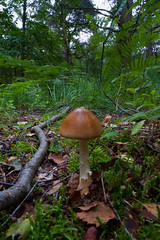
We arrived at Southwold on Friday and went for a shop round town then a quick tour of Minsmere. Then we went to the Eelsfoot Inn at Eastbridge, booked in. There were a family of Swallows sat under the metal stairs outside our room. All weeknd they were there sometimes all sometimes just a one or two. The parents were doing lots of swooping about, and would roost next to the young at night.
On Saturday we woke up in good time and thought we would have a go at our day record to celebrate our recent wedding. So we got up for an 8:30 breakfast at The Eelsfoot Inn, and were on our way down to the Minsmere sluices via the path that goes directly to the sea from Eastbridge. The weather was bright with a stiff wind from the north east but the air temperature was pleasant. Saw some great beetles and butterflies on the way. Saw a spotted flycatcher on top of a tree. When we got down to the sluice bushes we paused for a while in hope of a Pied Flycatcher but it was not to be, although the lesser and common Whitethroat we adequate compensation.
On to the public hide to see some Knot, Dunlin, common Sandpiper, and Redshank. Then on to the East hide, where some Sandwich Terns appeared. We were soon sat outside the Coastguard Cottages fighting off the wasps while we ate our lunch of toasted cheese sandwiches. The wasp I trapped in a bottle was really mad, even after Helen freed it. A bit of sea watching produced Common Scoter, but nothing else the winds was probably blowing them all off shore.
Over to Dunwich Heath we did not rate our chances of seeing any Dartford Warblers after the hard winter they have suffered, but there they were loads of them. The Heath was looking good the heather was bright purple and the gorse was starting to flower giving a contrasting bright yellow. We walked to the far north end of the heath before turning round and walking along the west boundary back towards Minsmere.
Lots of different mushrooms were out a sign of the recent damp weather and Autumn approaching, the light was really bright so it was a great opportunity to get pictures. We strolled along back to the visitors centre back at Minsmere via the west hide to share a portion of carrot cake. We headed off back to Eastbridge stopping off at the Bittern Hide (not much action except a juv. Marsh Harrier) then on to the Island Mere hide, where a few more ticks were recorded. We saw a very yellow warbler in a willow tree but could not make Icterine from it.
The sun was low in the sky as we headed down the Minsmere road back to the pub, we had a great day out, but had not managed to beat our record. August can be quite a quiet, we managed 61 quite a reasonable tally. There is always tomorrow when we plan to head slightly in land then out to Dunwich and back through Minsmere again. What a great day!